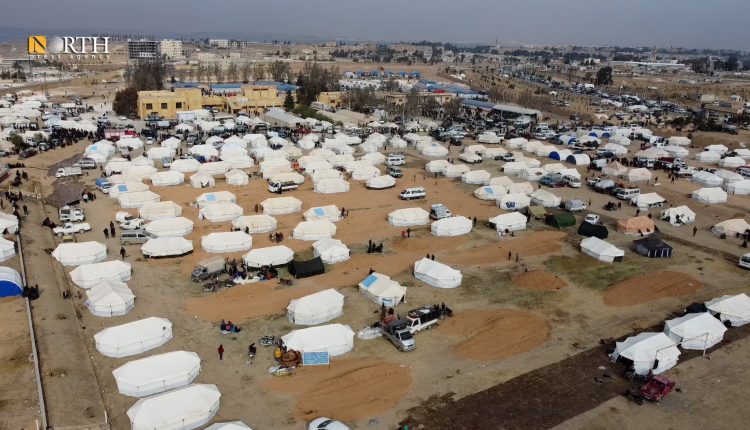AANES official warns US aid suspension deepens crisis in Syria’s camps
RAQQA, Syria (North Press) – An official from the Autonomous Administration of North and East Syria (AANES) said on Saturday that US’ decision to suspend foreign aid programs for 90 days has impacted education, healthcare, and living conditions in the camps in northeastern Syria.
The executive order, signed just hours after Trump’s second-term inauguration, mandates that all department and agency heads responsible for U.S. foreign development aid immediately halt new commitments and disbursements.
Naji Habo, co-chair of the AANES’ Organizations Affairs Department, explained that the decision has directly harmed displaced populations and camp residents.
He noted, “In a context where we already face extreme challenges—including limited international crossings and ongoing Turkish attacks that have triggered a fresh wave of displacement from the northern Aleppo countryside—this aid freeze only deepens the crisis.”
Habo added that while some European organizations continue to provide support, their contributions account for less than 25 percent of the overall humanitarian aid in the area.
Earlier on Friday, Human Rights Watch warned that the suspension of U.S. foreign aid could exacerbate life-threatening conditions in Syria.
According to Habo, the cutbacks have severely affected multiple sectors, including health care, education, food, basic services, social and psychological support.
Staff reductions in organizations dependent on U.S. aid have exceeded 80 percent.
Approximately 50,000 people live in the Hawl and Roj camps, where children under five comprise about 23 percent and those aged 5 to 18 make up roughly 42 percent of the population. These vulnerable groups are bearing the brunt of the suspension, according to the official.
Habo specifically cited organizations such as Blumont, Mercy Corps, CARE, and Save the Children as being among the most affected by the halt in aid.
The lack of food and health assistance poses a major challenge in facing the repercussions of this decision, as the malnutrition rate among women and children reaches nearly 20,000 among the residents of these two camps, according to Habo.
He pointed out that there are five thousand people in the camps in need of medical care because they suffer from chronic illnesses.
The official also mentioned that there are 1,500 individuals with special needs, and this decision exposes them to further marginalization and suffering.

